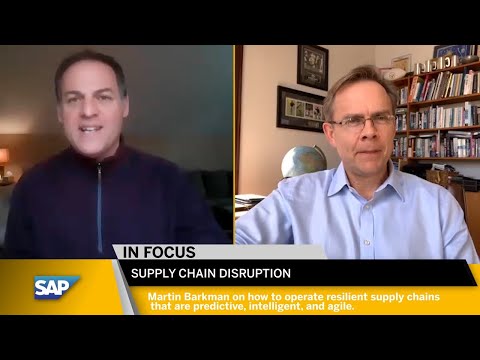In Google search results for “COVID-19,” stories about supply chain challenges will appear near the top of the search.
Highly variable demand for goods and services, uncertain supply of critical materials, and constrained capacity in manufacturing and logistics have resulted in critical shortages for medical equipment and consumer necessities.
These unparalleled supply chain disruptions are major contributors to the uncertain global economic environment.

The COVID-19 Consumer
Upon realizing that we would be staying at home for several weeks, human instinct kicked in. The demand for vital commodities such as milk, eggs, bread, hand sanitizer, and — of all things — toilet paper increased and the demand for discretionary and luxury items dropped drastically.
This completely changed the way that consumers think and act. We are thinking less about luxury items and all about necessities, which has caused volatile demand; less about personalized products and more about personal safety; less about a great shopping experience and more about a great delivery experience to our front door; and less about one-day delivery but more about delivering as promised.
Stretched Supply Chains
Demand from restaurants, schools, and other large customers has fallen while the demand from stores and individual consumers has increased, along with the volume of shipments, how they are packed, and how they are delivered. This has put a huge strain on the manufacturers, distributors, and retail outlets providing these commodities.
Manufacturers in particular have had to:
- Look for alternate sources of material
- Run planning scenarios and simulations to determine where and what to produce, where to position inventory, and how to satisfy demand
- Ensure that key assets and equipment are operational
- Search carrier networks for the logistics capacity to deliver goods
They have had to do all of this while ensuring the safety of their workforce. Technical work practices, for example, are being modified to accommodate social distancing while keeping production lines operational.
What is the New Normal?
When the pandemic eases, businesses will almost certainly be less risk tolerant. The days of the supply chain optimization being all about cost reduction are over. Supply chains will become — if they are not already — a strategic topic. Today, resilient supply chains, from design through manufacturing to delivery, are top of mind.
Businesses will look to:
- Have alternate sourcing strategies that balance local and global suppliers
- A “design everywhere, produce everywhere” approach
- Balance off-shoring, near-shoring and on-shoring manufacturing capabilities
- Drive inventory optimization policies to create strategic buffers of key products, components, and raw materials
- Conduct scenario planning and simulations in order to develop risk mitigation strategies
Boardroom discussions will focus on how to leverage supply chains to drive the recovery in the short term and to become more resilient and sustainable in the long term.
